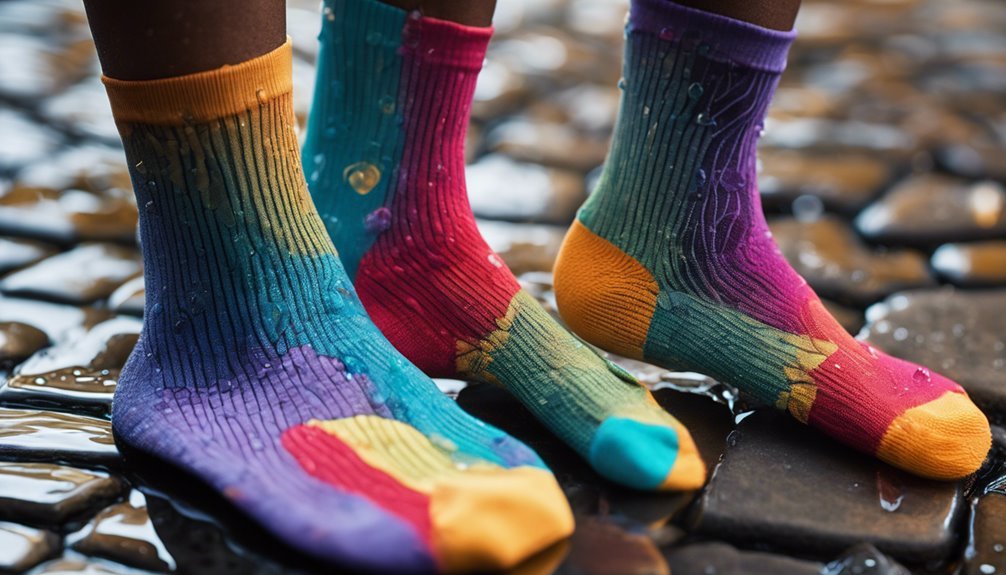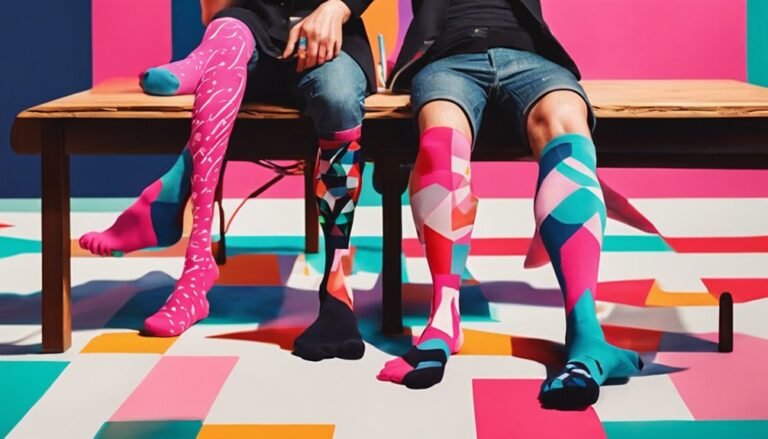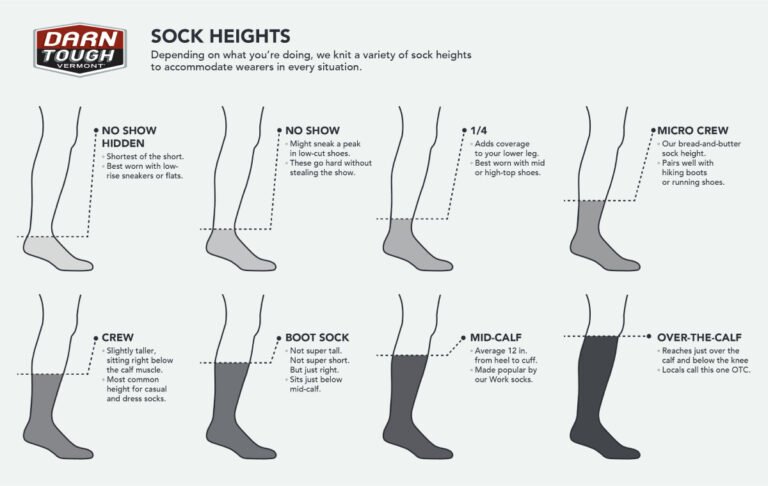Rainproof Socks vs. Quick-Dry Socks: Which Is More Effective for Wet Weather?
When deciding between rainproof socks and quick-dry socks for wet weather, each option has its merits. Rainproof socks keep water out and provide insulation, making them ideal for cold, wet conditions. However, they may trap moisture inside. Quick-dry socks excel in moisture-wicking and evaporation, keeping your feet comfortable during intense activities, but they're less protective. Ultimately, your choice should reflect your specific needs for waterproofing and moisture management. Discover how each sock type performs in detail.
Understanding Rainproof Socks: Features and Benefits

When you're out in the elements, rainproof socks can be a game changer for your comfort and performance. These socks are designed with advanced breathable materials that allow moisture to escape while keeping your feet dry from external water. The combination of waterproof membranes and insulation properties guarantees your feet stay warm, even in chilly conditions. Unlike standard socks, rainproof options prevent water from seeping in, offering a barrier against wet surfaces. This feature is essential for outdoor enthusiasts seeking freedom in their activities without worrying about soggy feet. Plus, the lightweight design maintains breathability, reducing the risk of overheating. Investing in rainproof socks means you're better equipped to handle unpredictable weather, enhancing your overall outdoor experience.
Exploring Quick-Dry Socks: Advantages and Disadvantages
Many outdoor enthusiasts appreciate the convenience of quick-dry socks, especially when faced with unpredictable weather or intense activities. These socks often feature advanced synthetic materials like polyester or nylon, which enhance their breathability factor, allowing moisture to escape while drying quickly. This can keep your feet comfortable during extended wear. However, one downside is that quick-dry socks may lack the insulation and durability found in thicker, traditional options. Additionally, they can sometimes feel less cushioned, leading to potential discomfort on long hikes. Ultimately, while they excel in moisture management and drying speed, considering the material types and your specific activities will help you determine if they're the right choice for your outdoor adventures.
Comparing Moisture Management: How Each Sock Performs
Although both rainproof and quick-dry socks aim to keep your feet dry, their moisture management capabilities differ markedly. Rainproof socks primarily focus on preventing water ingress, often using waterproof membranes. However, this can limit moisture wicking and breathability factors, leading to potential discomfort from trapped sweat. In contrast, quick-dry socks excel in moisture wicking, drawing sweat away from your skin and allowing for better evaporation. This promotes a drier environment inside the sock, enhancing overall comfort during wet weather. While both options offer unique benefits, if you prioritize moisture management, quick-dry socks likely provide superior performance. Ultimately, choosing the right sock depends on your specific needs for weather resistance and moisture control.
Comfort and Fit: Which Sock Offers Better Support?

While both rainproof and quick-dry socks serve distinct purposes, their comfort and fit can greatly impact your overall experience. When considering cushioning support and arch stability, you'll find differences that cater to your needs.
| Sock Type | Comfort Features |
|---|---|
| Rainproof Socks | Extra padding and insulation |
| Quick-Dry Socks | Lightweight with breathable mesh |
| Rainproof Socks | Enhanced arch support |
| Quick-Dry Socks | Flexible fit for freedom of movement |
| Rainproof Socks | Generally thicker for warmth |
Rainproof socks provide a snug fit, ideal for cold, wet conditions, while quick-dry socks offer a more breathable option for warm, humid weather. Ultimately, the choice depends on your personal comfort preferences and activity level.
Cost and Durability: Evaluating Long-Term Value
When evaluating the long-term value of rainproof versus quick-dry socks, cost and durability play essential roles. A price comparison reveals that rainproof socks often come at a higher initial cost due to advanced materials and technology. However, their longevity analysis shows they may withstand wear and tear better in harsh conditions, potentially saving you money over time. Quick-dry socks, while typically cheaper, may require more frequent replacements if exposed to wet environments regularly. Consider your usage patterns: if you're an avid adventurer, investing in durable rainproof socks could offer better long-term value. In contrast, if you prioritize quick drying for casual outings, quick-dry options could suffice without breaking the bank. Ultimately, weigh your specific needs against these factors for the best choice.
Frequently Asked Questions
Can I Wear Rainproof Socks in Hot Weather?
You can wear rainproof socks in hot weather, but be cautious. Their heat retention properties might cause discomfort. Opt for moisture management features to avoid excessive sweating and guarantee your feet stay dry and comfortable.
Are Quick-Dry Socks Suitable for All Outdoor Activities?
Imagine sprinting through a forest, your feet feeling light and dry. Quick-dry socks excel in performance factors, making them suitable for various outdoor activities, from hiking to water sports, ensuring comfort and freedom in every adventure.
How Should I Wash Rainproof Socks?
To wash rainproof socks, use gentle washing techniques like cold water and mild detergent. Avoid fabric softeners. Air-dry them to maintain their waterproof properties and prolong sock care, ensuring you can enjoy your outdoor adventures freely.
Do Rainproof Socks Inhibit Breathability?
Yes, rainproof socks can raise breathability concerns. While they excel in moisture management, the waterproof materials may restrict airflow, potentially leading to discomfort. Choosing a sock with balanced features can help mitigate these issues while keeping your feet dry.
What Materials Are Commonly Used in Quick-Dry Socks?
In a world of cotton and wool, quick-dry socks often utilize moisture-wicking fabrics and synthetic blends. These materials enhance breathability, ensuring your feet stay dry and comfortable, giving you the freedom to conquer any adventure.







